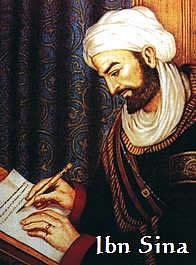The Development of Natural Sciences in the Islamic Civilization

The Islamic civilization has contributed immensely in the field of natural sciences. The intellectual output during the Abbasid period for example became the beacon of light through which Europe found its way out of the dark ages. Universities were constructed and became models of knowledge for European renaissance. During the Abbasid period, all the previous knowledge and scholarship of the Greeks were gathered in an institution called "the House of Wisdom". The House was established in Baghdad by the Abbasid Caliph "al- Mamun" who ruled from 813 to 833. The fact is that Muslims not only succeeded in preserving the Greek knowledge but actually added their own intellectual contributions which were used much later by European scientists. The unique contribution of the Islamic civilization in the field of philosophy for example was appreciated by Raphael, the famous Italian Renaissance artist, who included the Arabic scholar, Ibn Sina who is known in the West as Avicenna, in his famous painting of "the School of Athens" (1509-1510) which was hanged on the wall of the Stanza room in the Apostolic palace in the Vatican. The painting included the most famous philosophers in the classical period such as Aristotle, Plato, Pythagoras, Socrates, and Ptolemy among many other classic philosophers. Thanks to Avicenna, the philosophies of both Aristotle and Plato were transmitted to the West.
Muslim scientists excelled in natural sciences and contributed through various scientific inventions which paved the way for scientific progress in Europe. Examples of these sciences are:
Physics: Muslims invented the clock pendulum, the magnetic compass and the astrolabe. They pioneered in inventing specific instruments to measure weights and gravities with great precision. The Quran always encouraged people to explore and discover new things which open the door wide open for Muslim intellectuals to discover the secrets of the universe and establish a scientific methodology through which many scientific advances in the empirical sciences occurred.
Ibn al- Haytham is seen as one of the greatest scientists as he was the founder of Optics science. His greatest achievement in this field was his refutation of the traditional theory of the Greeks which affirms that vision is caused by a ray sent from the eye which strikes the object and then returns to the eyes. Through his studies he proved this theory to be erroneous through examining the reflection and refraction of light on the eyes. Ibn al- Haytham had many excellent studies on atmospheric pressure and was the first scientist to explain the phenomenon of the rainbow scientifically.
Mathematics: Muslims excelled in the field of Mathematics and they reached a level of sophistication in this science that led them to delve deep into astronomy and other natural sciences. Muslims took credit for being the first to use the letter "x" to refer to an unknown quantity. These mathematical advances paved the way for them to pioneer in both geometry and trigonometry.
The science of "Algebra" was invented by the Persian Muslim scholar "al- Khawarizmi" (d. 850). The Latin translation of his works introduced the science of Algebra to Europe. The Khawarizmi also invented the Arabic numeral system of counting after adding the Indian zero.
Medicine: Baghdad was the center of the advances in medicine as it hosted a wide range of hospitals and medical centers in the 10th century. The first hospital was built in 706 and was equipped with a staff of qualified physicians. Baghdad became a source of attraction for medical students who raced to take their medical examinations and sought licenses to practice medicine in Baghdad. Muslims achieved a lot of medical advances in surgical operations as they were the first to use anesthesia. They also discovered the technique of healing wounds through cauterizing them. They invented the first mobile ambulance on the back of camels to carry patients to the nearest hospitals. They also were the first to separate the science of pharmacology from medicine and practiced the writing of prescriptions. They discovered that the contagion of epidemics is usually transferred through touch and air.
The progressive medical school of the 10th century embarked on performing cancer-removing operations, cataracts and operations on the human skull. Muslims physicians received many cases of eye disease caused by the desert environment in which they resided so they developed the science of ophthalmology.
One of the greatest physicians of the Middle Ages was Abu Bakr al- Razi (d. 925). Aside from being a brilliant physician, he was well-versed in the fields of music, philosophy. He was the first to write a collective medical encyclopedia which contained all the medical advances which were known by his time. This encyclopedia was published in Latin in 1486 and was the first medical book published in Europe. He had a significant contribution in the field of music therapy, differentiating between smallpox and measles, the relation of sunstroke to circulation of blood and the study of pediatrics.
 Arabic
Arabic French
French Deutsch
Deutsch Urdu
Urdu Pashto
Pashto Swahili
Swahili Hausa
Hausa
